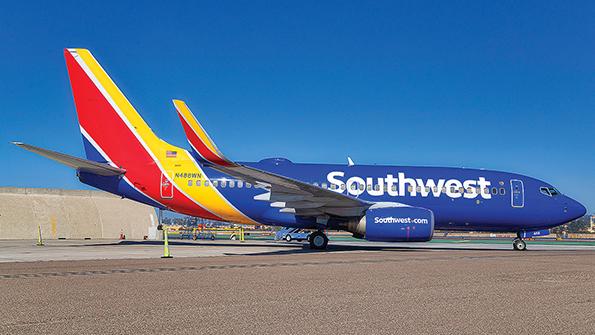
As airlines around the world slowly ramp up operations, several segments figure to receive particularly close scrutiny from aftermarket providers. On one end is the entire widebody market, expected to be the last to reach 2019 hour and cycle levels due to lingering cross-border travel restrictions. On the other is the narrowbody workhorse with the largest share of engine-services spending: the venerable CFM International CFM56.
The engine’s replacement, the CFM Leap, is now the dominant powerplant rolling off the GE Aviation-Safran joint venture’s narrowbody engine assembly lines. (Each partner has one Leap line.) But the in-service fleet of CFM56s is expected to outnumber Leaps until sometime in the second half of the decade. The maintenance honeymoons that new engines will enjoy mean annual Leap overhaul volumes should lag those of its predecessors until perhaps 2030.
Pre-pandemic, CFM56 shop-visit slots were arguably the most coveted in the engine overhaul market, and the outlook was similarly bullish. Safran projected that 45% of the 23,000 second-generation CFM56 engines—mostly CFM56-5Bs found on many Airbus A320ceo-family aircraft and -7Bs that power the entire Boeing 737 Next Generation fleet—would still be heading into their initial shop visit. In 2025, the figure would be 25% of the projected fleet of 20,000 powerplants. Shop visits were projected to grow at about 5% annually, peaking at about 3,100 in 2025-26. The reduced hours and cycles during the downturn will push these figures to the right.
Aviation Week’s latest MRO forecast, just released, sees the 25,200-strong CFM56 fleet generating 28% of total engine maintenance demand in 2022 as measured by spending, or about $10.4 billion. That is more than twice as much as for the next-largest family, the Rolls-Royce Trent.
While many in the industry are confident that traffic will return to 2019 levels by mid-decade at the latest, with narrowbody flying leading the way, some uncertainty remains about the makeup of future fleets. Both Airbus and Boeing are pushing to ramp up narrowbody production, which is expected to push up retirement rates, as a higher percentage of deliveries is slotted for replacement as opposed to growth. This in turn will help boost used serviceable material (USM) availability as retired aircraft are parted out.
While airlines have put many aircraft into storage in the last two years, official retirements have not spiked in the way some projected. The primary reason: Many operators are waiting to see how traffic will rebound before making permanent fleet decisions. Those willing to sell assets are not always seeing eye-to-eye with would-be buyers. Aircraft powered by the latest CFM56 engines have fared particularly well, as those A320s and 737s are seen as versatile assets by many operators.
In mid-September, about 12% of the 10,200 aircraft in the second-generation--CFM56-powered fleet was in storage, compared to 17% of the total fleet of 31,200 airliners certified for at least 19 seats. While some will return to service, many will be retired, providing much-needed USM for a number of platforms.
Aftermarket providers are purchasing fewer used parts than at any time since the global traffic downturn started in early 2020—a sign that the aircraft-retirement stalemate is affecting USM supply, a recent Canaccord Genuity analysis concluded. A survey by the firm conducted in July 2021 found suppliers sourced 13% of their parts from the USM market in the second quarter. The figure matches first-quarter 2018 and second-quarter 2019 for the lowest posted in more than three years and was a 10% drop from first-quarter 2021.
“We believe that the drop in USM purchasing points more to the lack of supply rather than a slowdown in demand,” Canaccord analyst Ken Herbert wrote in a related research note. “In fact, we believe purchasing of alternative material—including both parts manufacturer approval material and USM—will accelerate faster than [original equipment] parts purchasing as the recovery gains traction.”
Even when retirements pick up, the parts market will not follow right away.
“There is a lag from the time a plane is retired to the time that we would see it in the USM market,” says Larry Culp, CEO of GE, whose company buys more used parts than any other. “I think as we look out over the next several years . . . we [will begin to] see a return to normal-volume activities.”

